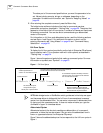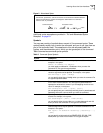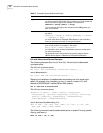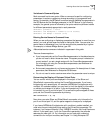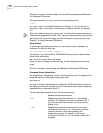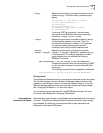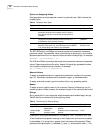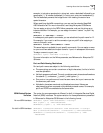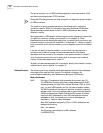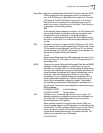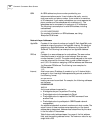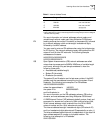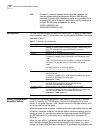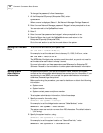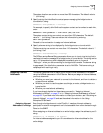
30 CHAPTER 4: CONFIGURING BASIC SETTINGS
The syntax variation for non-ISDN interfaces applies to local area network (LAN)
and data terminal equipment (DTE) interfaces.
Enterprise OS software menus and help strings do not display the syntax variation
for ISDN interfaces.
The variation in syntax is caused partially by the different path-numbering
convention used for ISDN. For information, see Using Enterprise OS Software.
Special parameter values related to built-in ISDN interfaces can also cause a
variation in syntax.
Some parameters in ISDN-specific software are connector-related and require that
you specify a connector number (<connectorID>), for example, 2. Other
parameters are channel-related and require that you specify both a connector and
a channel number (<connectorID.channelID>), for example, 2.1. When you specify
both a connector and a channel number, you must separate them with a decimal
point.
If you do not specify a channel number in a command that requires both a
connector and a channel number, the software assumes the first channel
associated with the connector. For example, if you specify connector number 2
when the syntax requires that you to specify both a connector and a channel
number, the software assumes you mean 2.1.
To specify all channels associated with a connector, specify the connector number,
a decimal point, and an asterisk, for example, 2.*
Address Formats The following summary describes media addresses and network layer addresses
the bridge/router uses and their formats. For detailed information on
protocol-specific addressing, see Reference for Enterprise OS Software.
Media Addresses
MAC Contains 12 hexadecimal digits preceded by a percent sign (%).
The NETBuilder II bridge/router has a media access control (MAC)
address (physical) for each LAN interface (Ethernet, FDDI, or token
ring), for each HSS interface, and for the main processor module.
The MAC address and the network identifier constitute a network
address, which is the only address used by Xerox Network Systems
(XNS) and Internetwork Packet Exchange (IPX) routers. IP routers
have both MAC addresses for their LAN interfaces and Internet
addresses for their configured ports. Internet addresses are
described in “Network Layer Addresses.”
Each MAC address is assigned by 3Com. A MAC address can be
displayed by entering:
SHow -SYS ADDRess
The following is an example of a MAC address:
%080002001326



